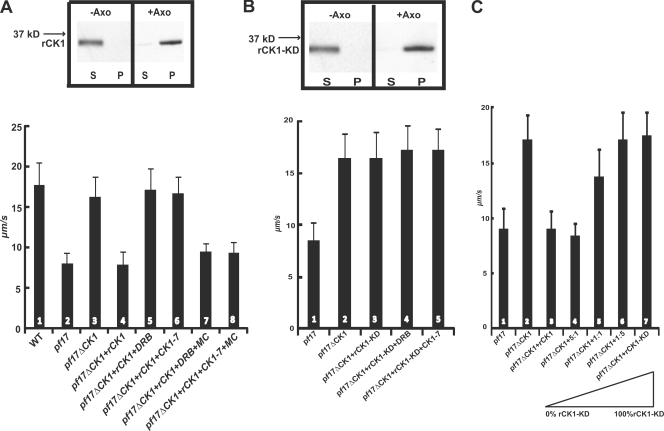Figure 4.
CK1 kinase activity is required for regulation of microtubule sliding. (A) Addition of rCK1 restores inhibition in CK1-depleted pf17 axonemes (bars 3 and 4) and rebinds to CK1-depleted pf17 axonemes (top). DRB and CK1-7 block restoration of inhibition (bars 5 and 6), and microcystin-LR blocks the effects of the kinase inhibitors (bars 7 and 8). (B) rCK1-KD rebinds to CK1-depleted pf17 axonemes (top) but fails to restore inhibition of microtubule sliding velocity (compare bars 2 and 3). Treatment with CK1 inhibitors had no effect (bars 4 and 5). P, pellet; S, supernatant. (C) rCK1 and rCK1-KD were reconstituted at different ratios to CK1-depleted pf17 axonemes (illustrated below bars 3–7). With increasing amounts of rCK1-KD, there is a corresponding increase in microtubule sliding velocity, indicating that rCK1-KD competes for binding and inhibits the effect of rCK1 on microtubule sliding. Microtubule sliding velocity is expressed as µm/s, and averages and standard deviations (error bars) were calculated from at least three independent experiments with a minimum sample size of 75 axonemes.

